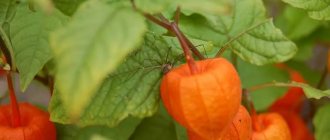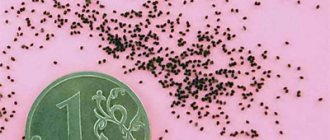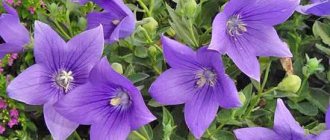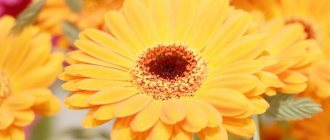If some part of your site is located in the shade and your favorite flowers suffer from lack of light, try replacing them with lungwort. It is enough to see a few photographs of this flower, and your doubts will disappear. And if the photo was not enough, then this article will help you make a final positive decision, from which you will learn how easy it is to grow lungwort in open ground, and how unpretentious it is in care and reproduction. All you have to do is choose a variety and start planting.
Lungwort: varieties and varieties
Almost all varieties of lungwort have an ability that is very rarely found in other flowers - they change the color of the corolla during the flowering process.
Blooming pink, the corollas gradually change color to blue. There are 15 species of lungwort. The most decorative of them, most often found in flower beds:
- Lungwort. A very impressive, but quite rare species. It is thermophilic. Its distinctive feature includes unusual large leaves, which at the beginning of spring are green in color and covered with silver spots, and by mid-summer the spots merge, thereby turning the leaf completely silver. Blooms in early spring with purple-red flowers.
Lungwort - Lungwort longifolia. Up to 25 cm high with very showy leaves. The upper part of the leaves is dark green, with silver spots scattered across it, and the leaves below are gray-green. This species is more resistant to sunlight than others. Begins to bloom in April. The inflorescences bloom pink and then gradually turn blue.
Lungwort longifolia - Red lungwort. The earliest view. It blooms for quite a long time with bright red flowers. In gardens it grows quite intensively, forming a dense ground cover of light green small leaves without spots.
Red lungwort - Lungwort officinalis. A low (up to 30 cm) plant, characterized by good winter hardiness - it can withstand frosts down to -35 degrees. It blooms for about a month, starting in mid-May. The corolla is red at the beginning of flowering, but over time it acquires a purple tint.
Lungwort officinalis - Lungwort is the softest. This type of lungwort forms dense bushes up to 50 cm high. It begins to bloom at the end of April with large blue-purple flowers. It blooms until mid-summer and very often reblooms in August or September. Leaves appear throughout the season.
The softest lungwort - Lungwort obscure (dark). Another type of lungwort that changes the color of its inflorescences when flowering from pink to blue or dark purple. More demanding on soil quality.
Lungwort obscure - Sugar lungwort or spotted lungwortI. Ground cover species. The evergreen leaves of this species form a large carpet. It blooms in spring with many inflorescences changing color from carmine to purple.
Sugar lungwort
Botanical description
Lungworts are herbaceous perennials from 8 to 50 cm in height with a branched, horizontally located rhizome. The string-like, fleshy, fragile roots of lungworts are very easy to damage, and they recover slowly. Numerous large long-petioled basal leaves of the plant form a rosette. The shape of the entire leaves, pointed at the apex, depending on the species, can vary from linear-lanceolate to broadly lanceolate. There are significantly fewer stem leaves than basal leaves, they are small and sessile. Leafy, erect, often pubescent peduncles are formed before the basal leaves begin to grow.
In the photo: Growing lungwort in a flowerbed
White, pink, lilac, blue or blue lungwort flowers have a double perianth, a bell-shaped five-toothed calyx and a funnel-shaped five-lobed corolla with a tube and an open throat from which five hair tufts grow. The flowers are collected in apical inflorescences-curls. A characteristic feature of representatives of the genus Lungwort is that the color of the buds and flowers of one plant is not the same: a pink bud can open into a blue, purple, light blue or white flower, and there are often bushes that can simultaneously have flowers of different colors. This phenomenon is explained by a gradual change in the acidity level of the cell sap in the corollas: juice with an acidic reaction turns the corolla pink, and with an alkaline reaction it turns blue and blue. Lungworts bloom in the spring.
Secrets of growing bluebells in the garden
Plants are pollinated by insects with long proboscis, such as bumblebees. The fruit of the lungwort is a nut that, when ripe, splits into four single-seeded lobes with fleshy aneurysms that attract ants.
- Echinacea: growing in the garden, types and varieties
Planting a plant
Lungwort prefers loose soils rich in humus. Sandy loam or loamy soils are good. For a flower garden, choose a place where there is no direct sunlight, because it is in the shade that the lungwort blooms brighter, and the patterns on the leaves become clearer.
The optimal time for planting is spring. During this period, the soil is most saturated with nutrients, and the absence of frost allows the young plant to adapt to the new environment.
Plant lungwort in a sunny place, and it will delight you with bright, lush blooms
Lungwort does not tolerate stagnant water, so it is very important that the area is well drained. Also, keep the area well clear of weeds.
Attention. Do not bury the lungwort when planting.
Mr. Summer Resident recommends: Lungwort – medicine for the flowerbed
The lungwort on the site is not only a beautiful flower with decorative leaves, but also a medicine that has a wide spectrum of action and is used in the complex treatment of various diseases.
Procurement of raw materials
The flowering period or before the buds open is the time to collect medicinal herbs. The stems along with the flowers are cut off and dry vegetation is removed. Tie in bunches and hang dry in the shade. Still in the oven, strictly at +40 °C. Then they grind it into powder and pour it into bags made of fabric or paper. Store dry herbs in a dry, cool place.
Compound
The medicinal properties and contraindications of lungwort are determined by its components. The composition of the medicinal herb:
- anthocyanins;
- flavonoids;
- routine;
- binders;
- polyphenols;
- allantoin;
- carotene;
- alkaloids;
- vitamin C;
- mucus;
In addition: copper, manganese, iron, iodine, silicon, potassium, calcium, saponins, tannins.
Benefit
Lungwort relieves cold symptoms and has other unique properties:
- Improves the functioning of the heart muscle, normalizes intracranial pressure, thickens the blood, constricts blood vessels, and stops bleeding.
- Relieves inflammation and promotes mucus removal.
- Calms the nervous system.
- Softens the skin, improves the structure of hair and nails, and slows down aging.
- Liquefies and removes mucus.
- Strengthens the immune system.
- Removes waste, toxins, eliminates inflammation of the gastric mucosa.
- Prevents thrombosis.
- Prevents malignant neoplasms
Lungwort is indispensable for the treatment of the upper respiratory tract: inflammation of the bronchi, lungs as an expectorant and cough reliever, also for tracheitis and laryngitis. Stops bleeding, helps with skin pathologies. Effective for rinsing the mouth after tooth extraction.
Due to the content of silicic acid, the herb relieves inflammation of the gastric and intestinal mucosa. It alleviates the symptoms of female diseases, it is used to prevent heart attacks and strokes, for pathologies of the thyroid gland, male prostate problems, anorexia, dysentery, and hemorrhoids.
The medicinal plant helps remove stones from the bladder and is used in cosmetology, but you must first consult a doctor.
Traditional medicine offers many recipes for infusions, decoctions, and alcohol tinctures with lungwort. They drink tea during diarrhea, freshly squeezed juice with vodka for anemia and leukemia. Pathologies of the bladder and kidneys are treated with herbal tea.
Prepared from young leaves of medicinal herbs, unknown salads, soups. The British grow it specifically for cooking.
Lungwort care
This perennial plant is unpretentious in care. In the spring, you need to trim off old dried leaves and mulch the soil to retain moisture longer. The lungwort likes to water abundantly, but not excessively. Especially during dry periods, as well as during bud formation and flowering. Lungwort must be replanted no more than once every 4 years, otherwise its bushes simply lose their attractiveness.
After flowering has ended, it is recommended to remove the flowers to prevent varietal plants from scattering seeds.
Mulching the soil will help the plant consume moisture optimally
It is better to cover the lungwort for the winter. Although some varieties can tolerate severe frosts, it will be safer if the plant overwinters under a small layer of leaves or peat.
Planting in open ground
When choosing a site for planting, you should be guided by the fact that in nature lungwort grows in wooded areas under the canopy of trees, so it is better to plant it in the shady corners of the site. Even full shadow will not be critical for her. In places exposed to the sun, only one variety will feel comfortable - the softest lungwort. At the same time, the plant does not like waterlogged soils, so in places where the ground is low, it is better to make a small embankment and arrange a drainage layer for planting. The plant is not picky about soil, but in nature it is more often found and looks better on fertile loam or sandy loam areas with alkaline or slightly acidic pH values.
Too bright lighting causes the foliage of the lungwort to lose color, its pattern is smoothed out, and the color becomes faded.
When to plant - spring or autumn?
According to reviews from flower growers, spring planting gives better results, but sowing seeds in winter is also acceptable.
Plant propagation
Perennial lungwort reproduces in several ways:
Dividing the bush. This method allows you to preserve all the varietal qualities of a perennial plant. At the very beginning of spring, the bush is dug up, the root is divided into parts and trimmed. The resulting divisions are planted at a distance of at least 30 cm from each other. Do not forget that you need to plant at exactly the same depth at which the plant was before dividing. If you couldn’t divide the flower in the spring, don’t despair, you can do it in early autumn, after flowering has ended. Sugar and long-leaved lungwort are most often propagated by dividing the bush.
Pattern: lungwort
Rhizome segments. This method is used to propagate medicinal, red, shaft-shaped and narrow-leaved lungwort. To do this, at the end of the season, several parts are separated from the root so that each of them has a bud. Afterwards they are planted to a depth of 4 cm.
Advice. Leave more space for these species because they tend to grow a lot.
from seeds very rarely; the only species that effectively grows in this way is the softest lungwort. Moreover, the seeds must be collected in the same year in which planting will take place. And all other species, when grown from seeds, very often lose their maternal characteristics, and bloom only in the second or third year after planting.
Advice. If you purchased the plant in a container, then when transplanting it into open ground, you should not water the flower too much, even if it looks slightly lethargic.
Choosing a lungwort variety based on reviews from experienced gardeners
The main characteristic that you need to pay attention to when purchasing seeds or seedlings is the regionalization of the variety. Factory varieties of lungwort indicate this in the description. Zoned lines grow better, bloom more profusely and suffer less disease. Unfortunately, many people make their choice based on photos; however, reality does not always meet expectations, especially when seedlings are purchased from private traders. And the point is not in deliberate deception, but, as mentioned above, in the strong cross-pollination of varieties and the unpredictability of the result. For plants with an open root system, it is important that the roots do not dry out. If seedlings are sold in containers, it is advisable to check the roots for rot.
Diseases and pests
Another positive aspect of caring for lungwort is that this flower is practically not susceptible to diseases and pest attacks. The only danger that can befall your plants is slugs and snails. They appear when the soil is too wet. Pull the weeds regularly and avoid over-watering, and you will not have any problems with lungwort.
Snail
Growing
Growing lungwort is quite simple, but you should remember that the seeds take a long time and do not germinate well. They need light to germinate. Seeds do not germinate in the dark. Therefore, it is better to give preference to vegetative propagation.
Plant the plants in a shady and moist corner in fertile, loose soil. When planting lungwort on acidic soils, liming is necessary. This plant is demanding on the presence of calcium in the soil. Lungwort grows in one place for quite a long time. Gradually, self-seeding forms around the plantings and a whole clearing of these beautiful and early flowering plants is formed.
Lungwort is a fairly popular plant among landscape designers. In addition to the decorative forms of the species listed above, they also use red lungwort (Pulmonaria rubra), long-leaved lungwort (Pulmonaria longifolia), and sugar lungwort (Pulmonaria saccharata). Varieties and decorative forms are easily cross-pollinated, so in order to preserve their decorative qualities, it is better to propagate them only vegetatively.
Photo by the author
Lungwort bush: combination with other plants
Lungwort gets along well with other plants. It works well next to the shade-loving hosta. However, you need to remember that some types of lungwort grow quite actively, so it is worth making larger gaps between plants so that your plantings do not turn into a jungle.
Lungwort combined with hosta
Contraindications to lungwort
Lungwort has the following contraindications:
- individual allergic reaction to substances contained in the plant;
- children under 6 years of age;
- weakening of the smooth muscles of the intestines and stomach caused by various diseases;
- tendency to constipation;
- high blood clotting, thrombus formation and thrombophlebitis;
- pregnancy period, breastfeeding.
In adulthood, the use of this medicinal herb should be limited, while carefully monitoring the body's reaction. If you have chronic diseases of the cardiovascular system or gastrointestinal tract, you should consult your doctor.
Lungwort bush in landscape design
Lungwort is an ideal plant for a natural garden. Many consider this flower the most beautiful of all forest inhabitants. It looks very natural among coniferous trees, forming a dense carpet dotted with colorful bright flowers.
Soft borders made from lungwort look neat. This perennial combines no less harmoniously with various shrubs. Try planting lungwort in the shade of derena or bladderwort.
Lungwort in landscape design
This flower is also irreplaceable in the spring garden in combination with blueberries, daffodils, and crocuses. And in flower beds with later plants it will look harmonious with astilbe, kupena and phlox.
Lungwort is a beautiful flower in its beauty and unpretentiousness. Growing it will not bring you any trouble, but its flowering will give you a lot of positive emotions. After all, it is not so often that you can find flowers that can change color during the flowering process. In addition, even on one lungwort bush there can be flowers of different shades. Decorate the shady corners of your garden with lungwort and let it delight you from the first warm days of spring.
Lungwort during pregnancy
During pregnancy and breastfeeding, caution must be exercised. The use of any medications containing lungwort should be discussed with the observing gynecologist, and then with the pediatrician. If there are no contraindications, then during the period of spring vitamin deficiency, you can use dried or fresh grass as a strengthening and restorative agent.
Important! If any negative symptoms appear, you should stop using lungwort.
Types of lungwort: photo
Collection, preparation and drying
There are people who specifically grow lungwort as an ornamental and medicinal plant. Others need to look for natural habitats of the lungwort.
It is collected at the edge of the forest and large clearings in shady deciduous forests. Sometimes the grass is collected from clearings. The entire aerial part of the lungwort is used as a medicinal raw material.
If the grass is dried correctly, it will have a pale green color. It has almost no smell. The taste of the herb is mucous, slightly astringent. Raw materials are collected in the spring when flowering.
The shoots need to be cut off almost close to the ground; it is important not to damage the root system. Recovery of lungwort is slow. This means that you need to collect raw materials from one plantation no more than once every 2 years.
After cutting, the grass is collected into bunches. They need to be placed in the shade and dried with normal ventilation. If there is no free access to air, the grass will quickly darken and lose nutrients.
It can be dried in dryers. The raw materials are laid out in a thin layer on a pallet. Dried herbs can be stored for no more than 1 year.
Watering and mulching
Photos of garden lungwort (planting and care are discussed below), shared by gardeners, show the result of proper care. One of its conditions is watering. It should not be frequent, especially if the planting site retains moisture well. Moisturizing action should be carried out when the soil shows obvious signs of drought.
When the soil needs liquid, this also affects the condition of the lungwort. Especially on the “red” variety. It is more susceptible to lack of moisture: the leaves lose their elasticity, sag and become withered.
In early spring, seedlings just planted in open ground and already mature plants need mulching. This measure is necessary to protect the plant from drying out, overheating, pests and diseases.
Sawdust, mown grass (hay), peat, and wood chips can be used as mulch. The mulching procedure is desirable, but not required.
Composition and beneficial properties
Honeydew contains many useful substances. It contains mucous and tannin compounds, vitamin C, rutin and carotene, and alkaloids. In addition, microelements were discovered that take an active part in hematopoiesis. This applies to copper, iron, manganese. There is also silicon, potassium, iodine and others.
At first, honeydew was used to treat various lung diseases, but then they found out that this herb is also very helpful in treating other pathologies. Lungwort is very beneficial for the whole body due to the presence of the following properties:
- astringents;
- expectorants;
- softening;
- accelerating wound healing and tissue restoration;
- stopping bleeding;
- diuretics;
- painkillers;
- disinfectants;
- anti-inflammatory.
Thanks to a large number of useful microelements, water spring herb has a good effect on the process of blood formation.
It is recommended to plant this plant in a semi-shade zone, as it will not be able to survive the heat.
It is also capable of activating thiamine and improving water, carbohydrate and protein metabolism.
The plant is used to treat the following diseases and pathologies:
- disturbances in the functioning of the nervous system;
- presence of headache;
- epilepsy;
- depression, insomnia, apathy;
- increased blood pressure, impaired blood circulation, anemia, anemia, increased heart rate;
- tracheitis, vasculitis;
- pyelonephritis;
- lack of vitamins and microelements;
- gastritis, colitis, peptic ulcer;
- metabolic disorders in the human body;
- the presence of stones in the kidneys and bladder;
- presence of cough of any origin;
- asthma, laryngitis, pneumonia, tuberculosis, bronchitis, various respiratory ailments in acute and chronic form;
- ulcers, eczema, abscesses, lichen, boils and other skin diseases that manifest themselves in the form of inflammation, rashes, pus formations and other symptoms;
- problems with skin pigmentation;
- uterine bleeding, inflammatory processes in the female reproductive system, the presence of pathological leucorrhoea;
- failure of the hormonal system;
- bleeding caused by various reasons;
- diarrhea;
- haemorrhoids;
- diseases of teeth and gums;
- presence of hoarseness;
- allergic reaction.
Application in cosmetology
The plant is used in cosmetology. This is due to the fact that it has wound-healing, cleansing, anti-inflammatory and rejuvenating properties.
This herb also stimulates hair growth. Usually the above-ground part of the plant is harvested during flowering.
For the treatment of purulent acne
The compress is also suitable for simply removing redness of the skin. To prepare, you need to pour two tablespoons of dry raw materials with half a glass of boiling water. The liquids are allowed to steep, but are not allowed to cool completely. The pulp is placed in gauze and applied to the affected area.
Decoction with leaves for rinsing
To prepare it, you need to pour 50 grams of dry herb with boiling water in proportions of 1 to 2. Let the medicine stand for 30 minutes. Afterwards it can be used for compresses and rinses.
Compress for the treatment of dermatitis
When the decoction is used, a paste usually remains. It is used externally for compresses. To prepare a compress, place the pulp on gauze. The edges of the gauze are wrapped to form a bag. It is applied to the affected area. The approximate procedure time is 15 minutes.
Rejuvenating and refreshing mask for face and body
To prepare it, you need to take equal parts of lungwort, linden leaves, clover flowers and mint in any form. These ingredients are taken only in dried and crushed form. The mixture is poured with boiling water and left for 40 minutes.
The result will be the consistency of sour cream; add boiling water if necessary. The mask is applied to all exposed areas of the body. For example, it is placed on the hands and face. Leave on the body for no more than 20 minutes.
After this, wash off with warm water. Soap cannot be used. You can repeat the procedures weekly. The mask is suitable for any skin type.
Trimming
Lungwort pruning is carried out once during the flowering season, and this procedure is aesthetic and useful. First of all, peduncles that have grown abundantly are cut off. They are cut off at the root so that not even stumps remain. And they always do this with a sharp knife or pruning shears. By breaking parts of the lungwort with your hands, you can damage other stems and leaves, or even uproot the plant.
It is also necessary to regularly inspect the plant for dry leaves. They should be periodically cut off and thrown away.
Use in folk medicine
In folk medicine, decoctions and infusions of lungwort are often used. Fill the plant with hot water only.
It is the hot liquid that interacts correctly with certain components of the plant.
Lungwort tincture on beer with honey for pneumonia
To prepare the product, take 2 tablespoons of dried herbs and pour 1 liter of beer. Mix the ingredients in a saucepan, add 1 spoon of honey.
The infusion is placed on the stove and boiled until the initial volume of liquid is reduced by half. The tincture is filtered. Drink the infusion 3 times a day, 1 tablespoon before meals.
Infusion with lungwort for kidney disease and hemorrhoids
To prepare, take 1 spoon of lungwort and pour very hot water into the pan. Infuse the medicine for about 1 hour. Take a mug per day.
Chest collection
The plant is an ingredient in breast collection. It, in turn, is effective for sore throat, cough and bronchitis. To prepare the collection, you need to take in equal parts such ingredients as oregano, coltsfoot, linden, mint, thyme, violet, pine buds and lungwort. Pour 2 tablespoons of the mixture into a container, pour in 0.5 liters of hot water, leave for 2 hours. Take 3 times a day before meals.
Pulmonary collection
It is usually used for the prevention and treatment of bronchitis. To prepare, take two teaspoons of calendula and linden. Mix in a large deep bowl.
Next, lungwort grass, marshmallow root, nettle leaves, violet, wild rosemary, and coltsfoot are added in the same volumes. All ingredients are mixed, a teaspoon of pine buds, elderberry inflorescences and elecampane roots are added.
When everything is thoroughly mixed, take 3 tablespoons of the mixture and pour it into a thermos or pan. Pour the collection with 3 cups of boiling water. Leave for 8 hours.
Medicinal properties
1. The plant is used to treat lung diseases.
2. It contains a huge amount of ascorbic acid. For this reason, products based on it strengthen the body well.
3. Flowers contain substances that have healing properties.
4. A decoction or infusion of lungwort reduces pain from bronchitis and sore throat.
5. It is recommended to take orally for bladder diseases.
6. Preparations based on lungwort stimulate blood circulation in the human body and accelerate wound healing.
7. It is recommended to use the herb in the treatment of cancer.
Decoctions and infusions of lungwort are widely used in medicine and cosmetology.
Additionally
In addition, the lung infection has the following effects:
- strengthens the scalp;
- accelerates the process of tissue regeneration;
- helps cleanse the blood and improve its composition;
- improves the condition of the skin;
- strengthens the immune system;
- affects the functioning of the glands that are responsible for secretion;
- strengthens the walls of blood vessels;
- has a beneficial effect on the functioning of the heart;
- prevents the appearance of tumors;
- is a prevention of thrombosis;
- prevents diabetes;
- has a beneficial effect on the acid-base balance;
- improves the functioning of the reproductive system of men and women.
However, despite its many beneficial properties, lungwort is not always beneficial. Contraindications must be taken into account. Decoctions and infusions based on this ingredient should not be used for atony, constipation, or intestinal spasms. Sometimes honeydew-based medications cause nausea. Before using such products, you should definitely consult a doctor.











